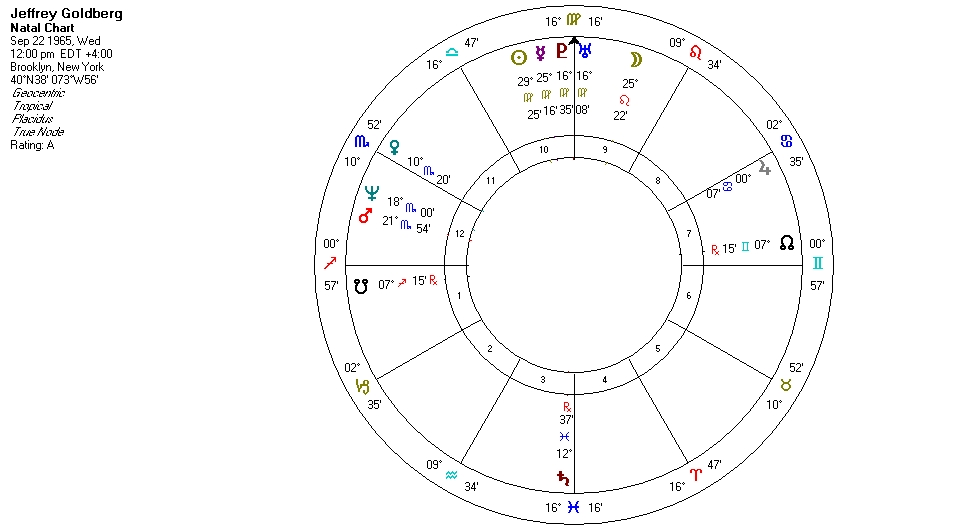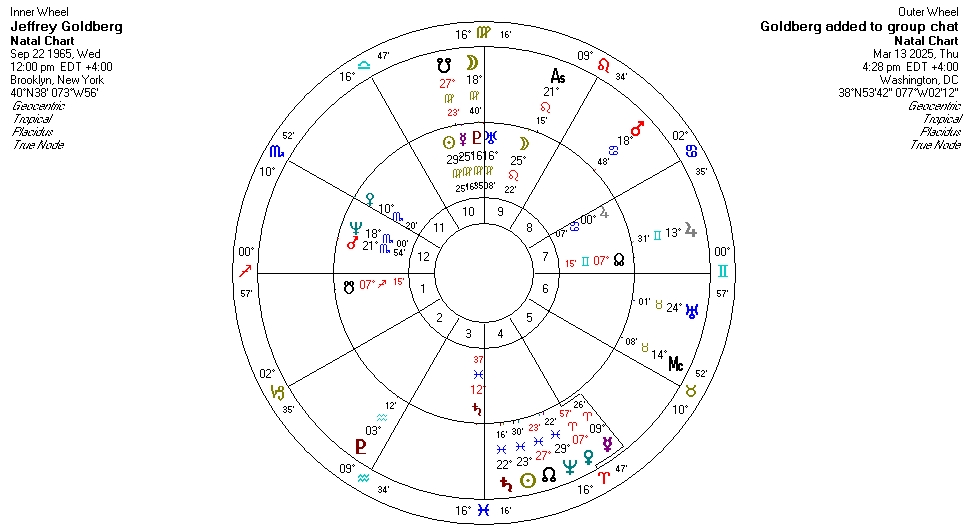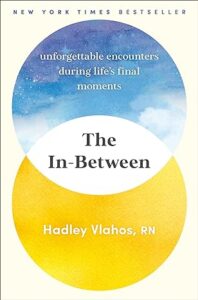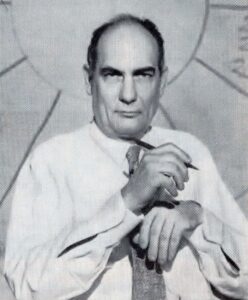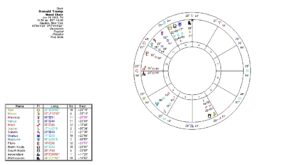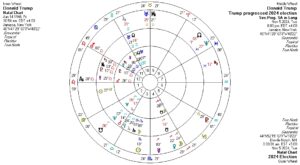Washington, D.C. astrologer Barbara Watters included a chart in her Horary Astrology book for an employee accepting a job with a less than ideal chart for the offer. It was her husband, James W. Watters, and he died in a lab explosion on the job when he was 59. 
We don’t have his time of birth, but he was born on May 23, 1909 in Selma, Alabama. He was a civilian employee working on an experiment in rocket fuel combustion for the Navy. We can see his work with potentially dangerous materials in his Sun-Mars-Jupiter T-square. He must have been very quick and bright with the Sun also in Gemini, but I’ve personally found that Mars-Jupiter oppositions can be somewhat clumsy or accident prone. James had Jupiter in careful Virgo which probably had alleviated the tendency somewhat. 
He had another T-square with Saturn in Aries squaring Uranus in Capricorn and Neptune in Cancer, and while this could indicate expertise and innovation, it, too, might also symbolize the need to take care with noxious chemicals (Neptune) or potentially combustible materials (Uranus). The Moon in Cancer may also be involved in the pattern, which could impact his physical health more strongly.
The only flowing aspects in the chart are Mercury conjunct Pluto in Gemini, both trine Mars, another pattern that may suggest dangerous situations. Though he must have had a strong analytical mind and good research skills (he had a PhD). Ultimately, the potential for a life threatening accident is in his birth chart (though of course we don’t have his time of birth).
James held the job for eight years, so the horary worked well for some time. The chart is set for the time when he opened the letter with the offer, after months of searching. He’d already rejected three previous offers due to “hopelessly bad charts.” He’d been “critically ill” with a “serious infection” and didn’t start work for several months.
Sagittarius rising and Jupiter in the 1st house represent James, since he had initiated the job search, and the Sun will sextile Jupiter, so he got the job. The position itself is ruled by Venus in the 12th (ruling the 6th of work), and the Moon in the 8th house is about to trine it. Barbara associated these in the horary with secrets, and the work demanded a top secret security clearance, which James had. (I’d guess that some of his natal planets were also in the 8th and 12th to do this type of work.)
Barbara didn’t like the Mars opposite Saturn, which she thought could create some “serious difficulties.” After the eight years, James developed some friction with his immediate supervisors, and started looking for another job. Not long after, he and a colleague were killed in the explosion on January 23, 1968. The fire only did minor damage to the lab. In her 1973 book, Barbara said that nothing about the cause of the explosion was ever revealed.
She felt that the timing in the horary was indicated by solar arc Mars conjoining the Moon (his dissatisfaction) and squaring the Sun (the accident). She often found the Nodes to be sensitive degrees, that any planet in the same degree in the horary was a “fateful testimony,” sometimes connected with an actual fatality. Mercury closely squares the Nodes. Pluto also squares the Ascendant/Descendant axis.
I might have considered James the 7th house, since the offer was initiated by the Navy. In that case, he was represented by Mercury, which seems a more obvious indication of what occurred. Whatever rules we use, Jupiter in Sagittarius also doesn’t seem like a weak, recuperating man to me.
At 59, James was experiencing his Jupiter return, which had also just squared his Sun and Mars, interesting due to the emphasis on Jupiter in the horary, and the issues with Jupiter in detriment as part of the natal T-square. Jupiter can certainly be explosive. Saturn would only return later in the year. Transiting Neptune in Scorpio squared his Mars, and Pluto in Virgo was within a degree of squaring natal Mercury, reiterating Pluto’s squares in the horary.
These charts make me wonder about the role of fate and free will. If James hadn’t accepted the offer, or the Navy hadn’t been so patient about delaying his employment, what would have happened? Could he have died in an explosion in a different research lab? How long does a horary answer last, and how influential could it be? And I wonder how much Barbara really saw in the chart, since she identified James with Jupiter rising.
James’ birthday on May 23, 1909 is from FindAGrave.com.
The horary is on page 130 in Watters’ Horary Astrology, which has been republished by the AFA.
About my reviews and links.


